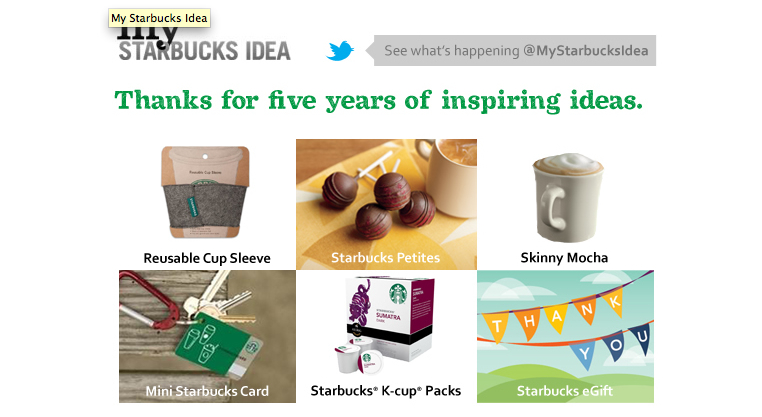Seizing Opportunity from the Eye of the Storm
Brand Strategy is frequently de-prioritized in a bull market when market conditions are favorable. Yet, in the wake of the Covid-19 crisis, we are entering an era where businesses must explore shaping the future to their advantage. As we move past the initial crisis management, there is a significant long-term opportunity to win in the rebound phase of the recovery by charting the course forward.
For some organizations, near-term survival is the only agenda item. Over the coming months, we will bear witness to companies winning and losing. Those who survive are going to be facing a new market with fewer competitors, and a dramatically changed the business environment. We believe that companies who weigh the trends, consider shifting behavior, and focus on innovation will be well-positioned to capitalize on never before seen opportunities.
While it is impossible to know what will happen, it is possible to consider the lessons of the past to think constructively about the future.
“Innovation is not born from the dream, innovation is born from the struggle.” – Simon Sinek
FROM CRISIS TO OPPORTUNITY
What do Disney, Target, and Starbucks have in common? They all launched or successfully retrenched during steep declines in the economy.
- Recognizing that America needed a smile more than ever, Disney was founded during the Great Depression. From there, the House of Mouse has never ceased to blaze trails, innovating to deliver high-value experiences. During the early 2000’s recession, around half of first-time Disneyworld attendees signaled they would not come back due to long lines, high costs, and other pain points. Digging into the problems led directly to the invention of long-term experience update, culminating in with the launch of the Magicband – a colorful wristband device that enables guests to travel lighter, enter the parks, unlock hotel rooms and buy food and merchandise. What can we learn from the longevity of the Walt Disney Company? How might the challenges of the current situation to speed up your long-term vision? How can your brand deliver value in the new reality?

- Founded in the wake of the 1893 Panic, what is now Target has become an iconic brand with a track record of adapting to adversity and understanding their consumer. During the 2007-2009 recession, Target saw a decline in spending on “wants” vs. “needs,” to strengthen its position, they launched a new store format devoted to food along with private label brands. They also increased media spending and reaffirmed its positioning with the slogan, “Expect more, pay less.” Since the launch of the re-positioning, new format and private label brands, food has become a $1.8 billion business for Target. What can we learn from Target’s downturn brand strategy? Remain connected to your consumer’s wants and needs—and pivot in a way that doesn’t undermine your brand or your long-term goals.
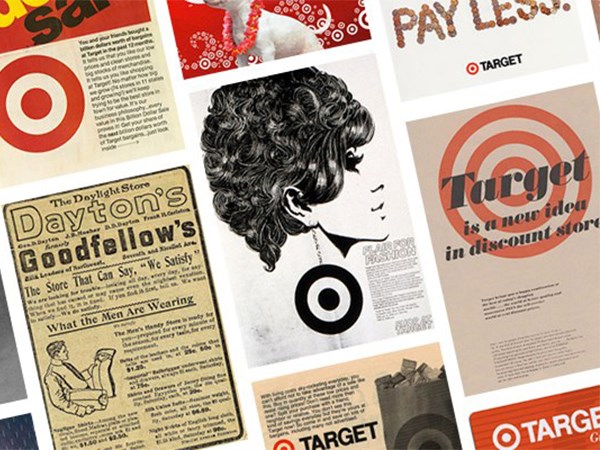
- Starbucks rapidly expanded once it went public in 1992 to become the largest coffee chain in the world. During the Great Recession, it became clear the growth had distracted from making its cafes an inviting place with new products. The company shifted back to a customer focus with the rollout of “My Starbucks Idea” to secure loyal customer opinions on everything from products, services, culture, and in-store music to regain an emotional brand attachment. They implemented over 100 ideas and grew brand loyalty with a robust fan base. What can we learn from the Starbucks retrenchment? What dialogue needs to happen with your consumer/customer/user to help you see the pathway to recovery?
MAPPING A NEW REALITY
It’s clear that in a rapidly changing market, previous assumptions and accepted truths may no longer apply. You now have the rare opportunity to take an intelligent pause to reevaluate the most critical factors facing your business comprehensively. Invest time in a health checkup for your business – identifying what’s working well and what isn’t, so you’ll be able to make better-informed and more profitable decisions.
Now is the time to take stock and:
- Uncover actionable insights to understand the most complex business challenges
- Evaluate competitors, industries, and culture for actionable advantage
- Revisit your long-term brand and portfolio planning
- Analyze shifts in user behavior in the context of market changes and emerging trends
- Understand changing user needs and identify white space opportunities
RISING STRONGER
Adversity is inevitable, but a significant market disruption doesn’t have to keep you from seizing the opportunity. Strength comes from struggle, and taking a thoughtful pause for brand strategy now will help you adapt your strategic response and position your brand to win post-outbreak. Now is the ideal time to embrace a transformational next step forward.
Monroe County (NY) Juvenile Detention Center
Kahua Expansion
Tru by Hilton
The Impact of Office Conversions on Communities
The appeal of office-to-residential conversions lies in the ability to tap into cost savings by repurposing existing office buildings instead of constructing new developments from scratch. This financial viability is complemented by the concept of adaptive reuse, which aligns with sustainability values and waste reduction, appealing to developers and communities with a green vision of the future. Additionally, the prime location of office buildings in desirable urban areas offers convenient access to transportation, amenities, and job opportunities, making them attractive to both developers and tenants seeking a vibrant community.
According to a recent report from Cushman & Wakefield, nearly 20% of office spaces are currently empty across the United States. As the demand for office buildings has declined, one solution to these vacancies is repurposing them into housing. Within this context, we spoke with our colleagues at NELSON Worldwide to explore the goals, challenges, and overall impact of office conversions.
The Appeal of Offices: Unlocking Hidden Potential
“As real estate strategists, we meticulously explore diverse applications and aim to create spaces that cater to multiple generations. While it may seem straightforward to consider converting an office building into a residential space, the intricacies involved in formulating such a plan are far-reaching,” says Terre Paller, Associate Principal, Senior Studio Leader, Asset Strategy. “A holistic approach encompasses a commitment to sustainability by repurposing existing structures, either entirely or partially, which not only yields environmental benefits but also contributes to the overall well-being of communities.”
Office conversions appeal to developers, brokers, and tenants for several reasons, one of which is cost savings. Although office-to-residential conversion is not a new concept, what is new is the anticipated repricing of office buildings as many sit empty and depreciate in value. At the same time, residential construction costs are not going down, especially with the continued housing shortage. Therefore, transforming an existing office building into housing can be more economical compared to constructing a new building, making the project financially viable.
“Within Asset Strategy, a significant aspect of our role entails facilitating successful deals for brokers and collaborating with asset owners to unlock the true value of their portfolios,” says Jeffrey Cumpson, Practice Strategy Leader, Asset Strategy & Workplace. “Adopting this perspective is critical when considering conversion projects, as it allows us to identify and harness the hidden potential within these buildings. Our goal extends beyond community enrichment; we strive to reinvent these developments in a manner that serves both neighborhood and asset owner, ensuring a mutually beneficial outcome.”
In certain markets, there can be a high demand for housing, making conversion projects more attractive to developers and brokers. As the cost to build new residential buildings begins to exceed the cost of conversions, local governments and downtown districts across the country are altering their zoning and use regulations to make conversions easier to comply with, and this trend will only continue. Instead of constructing new buildings from scratch, converting existing office spaces into housing allows developers to meet the high demand more quickly and efficiently. This streamlined approach can save developers time and resources, making the conversion project more enticing.
Revitalizing Downtown Business Districts
Office-to-housing conversions play a critical role in revitalizing downtown central business districts, offering a multitude of benefits that contribute to their success. These conversions lead to increased foot traffic as office buildings are transformed into housing, attracting more residents to the area. With a higher population density, downtown districts experience a surge in pedestrian activity, stimulating the local economy and creating a vibrant atmosphere.
Converting an office building into housing can often result in an excessive amount of residential square footage. While this can be perceived as a benefit, it can actually be a challenge as this extra space might not translate into rentable space. To maximize return, it’s imperative to devise strategies for incorporating mixed-use elements into these conversions, such as integrating retail spaces, retaining some office areas, or introducing alternative components that offer significant community benefits.
By integrating a variety of amenities and services into one location, such as retail establishments, restaurants, and entertainment venues, these conversions foster a dynamic and inclusive urban environment. The availability of diverse offerings within walking distance further enhances the appeal of downtown areas, attracting both residents and visitors.
Preserving the historic character of downtown central business districts is another significant benefit of office-to-housing conversions. Many older office buildings possess historical significance and architectural value. By repurposing these structures into housing, developers contribute to the preservation of the area’s cultural identity. The adaptive reuse of these buildings not only breathes new life into the downtown landscape but also honors its rich heritage.
While older buildings often exude undeniable charm and curb appeal, it is important to approach each conversion with a keen awareness of the associated uncertainties. Factors such as egress, ventilation, and return on investment must be thoughtfully considered when embarking on the transformation journey. Particularly with buildings from the 70s, 80s, and 90s, classified within their respective architectural eras, the inherent challenges must be taken into consideration. Gaining a comprehensive understanding of these challenges is essential as we reinvent these historic buildings, ensuring their successful adaptation for contemporary use.
Building Micro-Campuses in Suburban Neighborhoods
Office-to-residential conversions have the potential to attract new businesses to the area, leading to the creation of new jobs and the overall stimulation of economic growth. As more people reside in these districts, the local economy thrives, creating a cycle of prosperity and opportunity.
As we embark on new development projects, it is crucial to recognize that the transformation of older projects does not necessitate complete demolition. Instead, it is imperative to envision the potential of revitalizing suburban office parks. With the shift of people from cities to suburbs following the impact of the COVID-19 pandemic, we witnessed a resurgence in these suburban areas. In response, communities began enhancing their appeal by introducing an array of amenities, such as retail spaces, coffee shops, and local attractions. Harnessing this momentum, we have the opportunity to convert once-dated suburban office parks into dynamic live-work-play environments that foster a sense of community and offer engaging experiences for residents to enjoy.
There is an opportunity to expand on vacant pieces of land and develop them into micro-campuses. Offices are often surrounded by vast parking lots and empty space, architects can capitalize on these vacant areas and turn them into destinations in and of themselves. When we encounter developments situated on expansive parking lots, we are presented with remarkable potential and a unique opportunity to transform these spaces into captivating outdoor amenities or incorporate additional structures, effectively creating micro campuses. These micro campuses leverage their close proximity to transportation hubs and offer community members an easy way to access live-work-play destinations.
Collaboration and Growth
As architects and designers, it is important to have an open dialogue with our peers to better understand conversions and how we can continue this cycle of adaptive reuse.
“Collaborating closely with general contractors and exchanging valuable insights is of utmost importance. While architects possess a profound understanding of the architectural and design aspects of these conversions, it is equally crucial to comprehend the specific requirements and considerations sought by general contractors,” says Tom Arsovski, Regional Practice Leader, Mixed Use, Southeast Director. “Architects should actively engage with experienced contractors operating within these markets. Given the significant interest and relevance of this topic, fostering meaningful conversations and establishing connections among professionals is paramount to staying at the forefront of this dynamic field.”
Office-to-residential conversions breathe new life into communities through increased foot traffic, the creation of mixed-use developments, preservation of historic buildings, economic growth, improved public safety, reduced commute times, and environmental sustainability. While residential conversions have been around long before the current trend, they will only continue to increase as the years go on, ultimately, paving the way for vibrant, inclusive, and sustainable urban environments that attract residents, businesses, and visitors alike.
Key Takeaways from CRE.Converge 2020
Another year of CRE.Converge has come and gone, and much like most 2020 events, attendees learned and networked from the comfort of their own homes. In a year where so much as changed and the future remains unknown, a common thread across this year’s event let us know that change is here, change is coming, and it’s here to stay. However, as hundreds of professionals virtually gathered, one thing the real estate industry is sure of is it that “COVID-19 is the great accelerator, not innovator” and many of the things that have been growing for years, are taking off in full force now, in the midst of a pandemic. Here’s a look into this year’s events:
Retail E-volves
As online purchasing habits surge, people have become more reliant on brands that offer these services pushing traditional brick-and-mortar locations to rethink the way they are using and presenting their current real estate. While people still desire a place to pick up and view their items, click-and-collect concepts are becoming more popular than ever. This not only impacts front-of-house for retailers, but also back-of-house operations and how they manage items sent from manufacturing to the customer-facing destination.
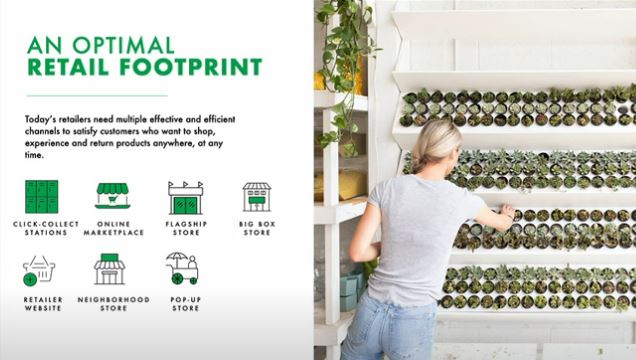
The Suburban Shift
Large cities have been impacted by COVID-19 the most and as it indefinitely remains a part of our world, many city dwellers have turned to the suburbs for more space. In particular, large numbers of millennials are taking to the suburbs looking for first-time home buys and better schools. Today and on the horizon, suburbs will become areas of heavy development for all sectors of real estate.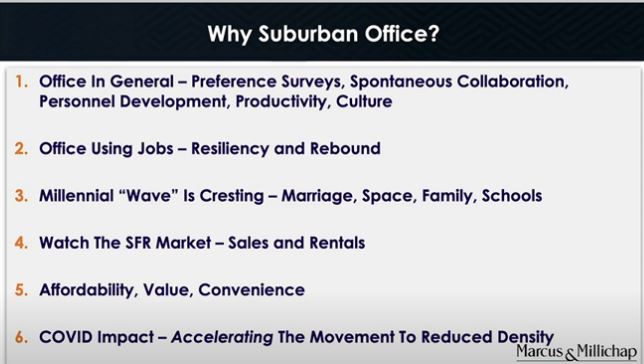
Wellness Concepts of All Shapes & Sizes
In an era of self-care and on-demand information, health needs extend far beyond illness or injury. The definition has expanded to include bio labs, wellness brands, fitness offerings, and cosmetic surgery, and consumers are demanding these services become more accessible than ever before. With an increase in vacant space and a global wellness industry worth nearly $4 trillion, there is a glaring opportunity to transform these spaces to meet consumer demands through today’s expanded healthcare offerings.
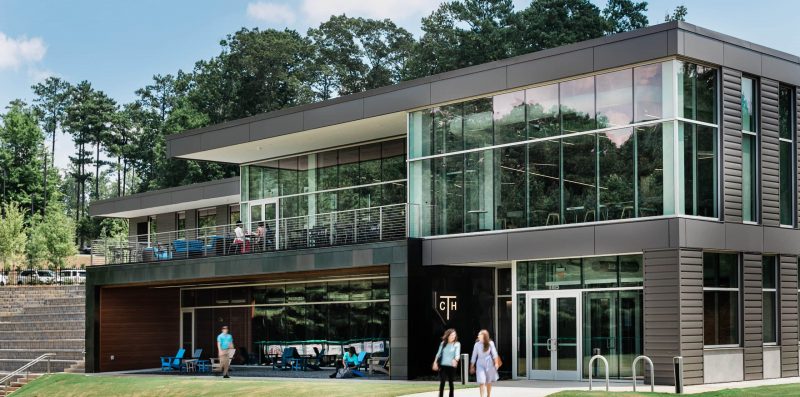
Interiors + Sources: Details that Set Spaces Apart
The best offices don’t shoehorn employees into a cookie-cutter design. They embrace what makes their organizations special. Read more with Interiors + Sources.
How To Plan Retail Spaces For Millenials
Larger than the epic Baby Boom generation, millennials currently make up about 92 million of the population in the US. Born between the 1980 and 2000, Millennials (or Generation Yers) are defined as those who reached adulthood during the 21st century. They’re known to be incredibly tech-savvy, environmentally friendly, and avid researchers – especially when it comes to making purchases. While it is true that millennials still make 75% of their purchases in traditional brick-and-mortar retail stores, over half compare prices and actively research brands, prices and reviews before ever setting foot inside the physical location. For brands wanting to ensure that the Millennials who have researched them and their products online reason complete the final in-person sale, it is incredibly important to pay attention to both in-store design as well as the design of websites and mobile apps.
Here are some tips for designing brick-and-mortar locations that benefit millennials:
1. Utilize Omnichannel
The design and brand of your website, mobile apps and online stores as well as your brick-and-mortar locations should feel like it is from the same company. Creating a similar experience and brand in all “locations’ whether physical or virtual gives shoppers the comfort to browse and research before even leaving their house. Some great examples include Sephora and L.L. Bean.
2. Cut Down on the Clutter
Minimizing clutter and adding more organized “white space” provides a sense of serenity for millennial shoppers. Try reducing the number of displays or sales racks.
3. Pay Attention to Color
Limit your color palette to neutral colors rather than overly bright and bold. This evokes natural relaxation for Generation Yers. Bringing in colors from nature is an easy way to provide a “getaway” experience. Think of Urban Outfitters.
4. Appeal to All the Senses
While design and color remain of paramount importance, you can’t forget about smell and sound. Calming music and scents tailored to your brand can greatly influence shoppers’ decisions. Stores like Bath and Body Works appeal to all the senses. Soft lighting accompanied by calm music and amazing smells invite the shopper to escape to their “calming space” without having to leave the store.
5. Create Space
If you can’t afford an entire remodel, try creating resting space within. Rearranging furniture and clothing racks can provide optimum space for millennials to shop and recharge before finalizing their purchase. Examples include stores like Nordstrom that have café style areas.
For more tips from Eric Eberhardt, Director of Retail at NELSON, click here.
EuroShop 2017: Bogner
Foreword: Every 3 years, 100,000+ visitors flock to an international destination to experience all things retail. Hailed as the “Global Retail Trade Fair,” EuroShop covers all things retail related, from store design to visual merchandising. Located in Dusseldorf, Germany, the event offers 17 exhibition halls within 19 different buildings. A group of lucky FRCH-ers made the trip this year and will be sharing global trends and inspiration from the conference and nearby travel all week!
We see the trend of bringing the outdoors “in” for retail, and Bogner in Cologne is a great example of the use of natural resources to create great impact on the store experience. Whether it is for displaying the merchandise or functional users, the added aesthetic to the store is a natural fit.
A sophisticated retail experience showcasing premier German sporting apparel. For those not familiar with the history of the brand or the founder Willy Bogner, check out the website. The entrepreneurship, artistry, and athleticism rooted in the brand is truly unique.
